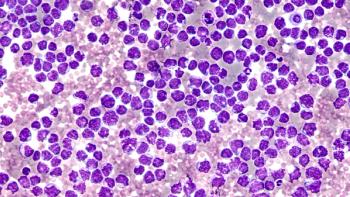
Brain Circuit Associated With Epilepsy Found in Mapped Lesions
Lesion mapping led researchers to identify a common brain circuit related to epilepsy.
A new brain circuit found by mapping lesions related to epilepsy could have clinical implications for predicting a patient’s risk of epilepsy after brain damage, a study finds.
“We're learning more and more about where in the brain epilepsy comes from and what brain circuits we need to modulate to treat patients with epilepsy,” lead author Frederic Schaper, MD, PhD, an instructor of neurology at Harvard Medical School and scientist at the Brigham and Women’s Center for Brain Circuit Therapeutics, said
This case-control study was published in
Although focal epilepsy is known to affect more than 30 million individuals worldwide, it remains unclear why some lesions cause epilepsy and others do not. In this study, the researchers aimed to better understand whether lesion locations associated with epilepsy could be mapped to specific brain regions and networks.
Using a technique called lesion network mapping, the researchers studied 5 data sets of more than 1500 patients with brain lesions across the world, including centers in the United States: Brigham and Women’s Hospital, Massachusetts General Hospital, Boston Children’s Hospital, and Northwestern University.
In total, the researchers identified 347 patients with epilepsy and 1126 without across all data sets analyzed from September 2018 to December 2022. Additionally, lesion locations were identified from 76 patients with postroke epilepsy and 625 patients with stroke.
Although lesions associated with epilepsy were found in multiple heterogenous locations across different lobes and vascular regions, these locations were part of a specific brain network of functional connectivity to the basal ganglia and cerebellum. These findings were then validated across 4 independent cohorts of 772 patients with brain lesions, in which 271 (35%) had epilepsy.
After validation, the researchers found that lesions connected to this brain circuit were associated with increased risk of epilepsy after stroke (odds ratio [OR], 2.82; 95% CI, 2.02-4.10; P < .001) and across different lesion types (OR, 2.85; 95% CI, 2.23-3.69; P < .001).
Furthermore, the researchers analyzed the outcome of 30 patients with drug-resistant epilepsy who underwent deep brain stimulation (DBS) treatment for seizures. As a result, these patients showed improved seizure control (r = 0.63; P < .001) when the DBS site was connected to the same brain network identified by mapping lesions.
The researchers acknowledge several limitations to the study, such as focusing their study on a brain network from focal brain lesions, as it is unclear if the results would remain significant across other causes of focal epilepsy or generalized epilepsy. Additionally, lesion network mapping uses functional connectivity data from healthy patients to estimate the connectivity of the lesion location in the average brain, but functional connectivity may be altered in individuals with brain lesions or epilepsy and may change over time.
Despite these limitations, the researchers believe the study has the potential to help clinicians identify patients with high risk of epilepsy after brain damage and guide them to appropriate methods of treatment, such as DBS.
“Now we know more about what brain circuits may play a role in both the cause and control of epilepsy, this opens up promising opportunities to guide our therapies,” Schaper said
References
1. Brigham and Women's Hospital. New brain circuit for epilepsy uncovered. EurekAlert! July 3, 2023. Accessed July 10, 2023.
2. Schaper FL, Nordberg J, Cohen AL, et al. Mapping lesion-related epilepsy to a Human Brain Network. JAMA Neurology. Published online July 3, 2023. doi:10.1001/jamaneurol.2023.1988
Newsletter
Stay ahead of policy, cost, and value—subscribe to AJMC for expert insights at the intersection of clinical care and health economics.













































